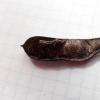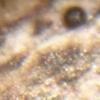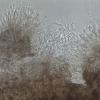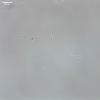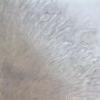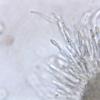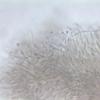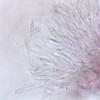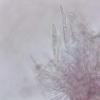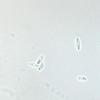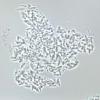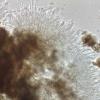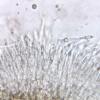
21-11-2025 11:52
Jean-Luc RangerBonjour à tous, on voit toujours 2 espèces areni

21-11-2025 10:56
 Christopher Engelhardt
Christopher Engelhardt
Very small (~0,5 mm) white ascos, found yesterday

14-11-2025 16:26
 Marian Jagers
Marian Jagers
Hello everyone, On dead wood of Cytisus scoparius

17-11-2025 21:46
Philippe PELLICIERBonjour,Récolté sur bois pourrissant de feuillu

20-11-2025 14:14
Mick PeerdemanFound on the leaves of 'Juglans regia' in the Neth

20-11-2025 13:07
Mick PeerdemanIn January i found these black markings on the dea

20-11-2025 12:38
Mick PeerdemanDear all,Last week i stumbled upon a leaf of ilex
A second anamorph on seed-pod Cytisus
François Bartholomeeusen,
22-04-2025 10:37
Black conidiomata breaking through the epidermis, with an average diameter less than 50 µm;
a)The conidia are hyaline, elliptical / fusiform with some lipid bodies in the vicinity of the poles.
Dimensions: (5.7) 7.9 - 10.1 (10.7) × (2.3) 2.8 - 3.6 (3.9) µm
Q = (2.1) 2.3 - 3.3 (3.9); N = 30
Me = 9 × 3.2 µm; Qe = 2.8
b) Conidiophore longer than 30 µm and almost 3 µm wide
Thanks in advance,
François Bartholomeeusen
Hans-Otto Baral,
22-04-2025 16:24

Re : A second anamorph on seed-pod Cytisus
I compared the anamorph of "Pezicula" scoparia which is the anamorph of Apiculospora spartii Wijayawardene et al. 2016. ITS of that from Spartium is congruent with P. scoparia on Cytisus scoparius. The conidia get larger and finally dark brown and septate, however.
The species is in my folder scoparia of Rodwaylla (Pezizellaceae).
François Bartholomeeusen,
23-04-2025 18:42
Re : A second anamorph on seed-pod Cytisus
Dear Zotto,
Thank you very much for your reply. I compared my find with your folder "scoparia of Rodwaylla" but there was no match.
Today I examined again another conidiomatum and my findings are the same. The conidia are and remain hyaline. As I reported to Bernard Declerck regarding my previous entry on the forum, I will classify this find under 'UFO' (unidentified fungal object).
Kind regards Zotto and thanks again,
François
Thank you very much for your reply. I compared my find with your folder "scoparia of Rodwaylla" but there was no match.
Today I examined again another conidiomatum and my findings are the same. The conidia are and remain hyaline. As I reported to Bernard Declerck regarding my previous entry on the forum, I will classify this find under 'UFO' (unidentified fungal object).
Kind regards Zotto and thanks again,
François

